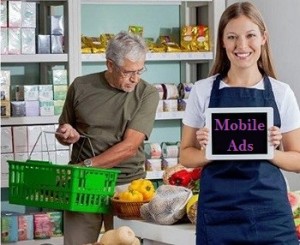The automaker will be attaching devices to feature models to broadcast information to customer smartphones.
Ford dealerships could soon have a new way of making sure that customers visiting showrooms will learn about the hottest features associated with certain models as the company pilots a geolocation technology based marketing program.
This would send key info about a model directly to a consumer’s smartphone as he or she approaches it.
The hope is that this geolocation technology will help to make it easier to close a sale. The consumer will receive information only about the models that have caught his or her attention, as the tech sends the information about the models that the potential buyer has approached, as he or she walks around the vehicle. I t is as though the vehicle will be able to give its own sales pitch, regardless of whether or not an associate is present at that specific moment.
t is as though the vehicle will be able to give its own sales pitch, regardless of whether or not an associate is present at that specific moment.
The geolocation technology will allow customers to enjoy a more independent sales process.
Many consumers do the majority of their research online, using an automaker’s website to be able to learn about the features, options, and pricing of a vehicle. Actually visiting a showroom floor is essentially at the very end of the purchasing cycle, when the consumer is quite close to making a final decision.
This indicates that consumers are more interested in finding out a large portion of the information about various vehicle models on their own, and that an actual sales associate at a dealership has a notably smaller window of time in which to close a sale.
The Ford.com digital manager, global and mobile, Trisha Habucke, pointed out that “Even five or six years ago, people would actually go to the dealer four or five times (before making a purchase). Now they’re doing so much research independently that when they get to the dealership they don’t want to start over, they want to continue on and get their pricing and get their ‛why buys’ right there. And sometimes they want to do that independently,” ahead of actually speaking with one of the dealerships sales team.
The geolocation technology marketing is meant to help consumers to do that, so that they can still inform themselves in the way and timing that they prefer.
Within the first day of viewing, these smartphone advertisements generate considerable consumer response.
As mobile ads move from being in their early infancy toward the next phase in their maturity, many companies and marketers are still scrambling to try to find the right metrics to be able to measure their effectiveness.
A new report has now revealed that these smartphone and tablet ads can have a large affect on consumers.
The report was issued by NinthDecimal, a mobile intelligence firm based in San Francisco. What it revealed was that mobile ads that were having an impact on the behaviors of the consumers who saw them, and that this affect was on the rise. The study used data from 2014 in the second and fourth quarters . It measured advertisements displayed through Android and Apple apps, though not those that were displayed by way of web browsers. What was shown in The Mobile Audience Insights Report was that within the first day following the viewing of a mobile advertisement, there was an increase of 80 percent of in-store visits.
The report states that this helps to reveal more about the impact of mobile ads, which had previously gone unmeasured.
 In order to come to this conclusion, NinthDecimal both developed and used a Location Conversion Index, which it calls the first ever measurement of the real world behaviors that are the result of engagement over mobile advertisements. According to the company, it based its data on the results and actions of 1535 mobile users who were selected at random, on top of billions of different data points from campaigns that its clients ran on its platform.
In order to come to this conclusion, NinthDecimal both developed and used a Location Conversion Index, which it calls the first ever measurement of the real world behaviors that are the result of engagement over mobile advertisements. According to the company, it based its data on the results and actions of 1535 mobile users who were selected at random, on top of billions of different data points from campaigns that its clients ran on its platform.
What the outcome of the data analysis found, said the report, was that while the impact of mobile advertising can be a considerable one, it is not consistent from one industry to the next nor is it the same from one store to the next. Distance to the nearest store location also plays a role in the outcomes that were measured.
Interestingly, retail mobile ads, for example, were able to generate the greatest results for driving consumers into brick and mortar shops when those shoppers were already between 2 and 5 miles away from the store when they saw the ad. That represents a success rate that was 24 percent better than the average.
 t is as though the vehicle will be able to give its own sales pitch, regardless of whether or not an associate is present at that specific moment.
t is as though the vehicle will be able to give its own sales pitch, regardless of whether or not an associate is present at that specific moment.
 In order to come to this conclusion, NinthDecimal both developed and used a Location Conversion Index, which it calls the first ever measurement of the real world behaviors that are the result of engagement over mobile advertisements. According to the company, it based its data on the results and actions of 1535 mobile users who were selected at random, on top of billions of different data points from campaigns that its clients ran on its platform.
In order to come to this conclusion, NinthDecimal both developed and used a Location Conversion Index, which it calls the first ever measurement of the real world behaviors that are the result of engagement over mobile advertisements. According to the company, it based its data on the results and actions of 1535 mobile users who were selected at random, on top of billions of different data points from campaigns that its clients ran on its platform.